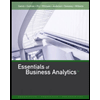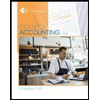
To determine: The number of periods of investment.
Introduction:
The
Answer to Problem 5QP
Solution:
The number of periods is as follows:
| Particulars | Present value | Years | Interest Rate | Future value |
| Investment A | $625 | 10.64 | 7% | $1,284 |
| Investment B | $810 | 14.81 | 12% | $4,341 |
| Investment C | $16,500 | 20.35 | 17% | $402,662 |
| Investment D | $21,500 | 25.01 | 8% | $147,350 |
Explanation of Solution
Given information:
Investment A has a present value of $625, future value of $1,284, and an interest rate of 7%. Investment B has a present value of $810, future value of $4,341, and an interest rate of 12%
Investment C has a present value of $16,500, future value of $402,662, and an interest rate of 17%. Investment D has a present value of $21,500, future value of $147,350, and an interest rate of 8%.
Formula:
Derive the formula to calculate the number of periods from the present value equation as follows:
The formula to calculate the number of periods:
Where,
“t” refers to the number of years or periods of investment,
“ln” refers to the log value,
“FV” refers to the future value,
“PV” refers to the present value,
“r” refers to the simple rate of interest.
Compute the number of periods for Investment A:
Hence, the number of periods of Investment A is 10.64 years.
Compute the number of periods for Investment B:
Hence, the number of periods of Investment B is 14.81 years.
Compute the number of periods for Investment C:
Hence, the number of periods of Investment C is 20.35 years.
Compute the number of periods for Investment D:
Hence, the number of periods of Investment D is 25.01 years.
Want to see more full solutions like this?
Chapter 4 Solutions
UPENN: LOOSE LEAF CORP.FIN W/CONNECT
- Need help in this fin.arrow_forwardNew-Project Analysis The president of your company, MorChuck Enterprises, has asked you to evaluate the proposed acquisition of a new chromatograph for the firm's R&D department. The equipment's basic price is $64,000, and it would cost another $18,000 to modify it for special use by your firm. The chromatograph, which falls into the MACRS 3-year class, would be sold after 3 years for $28,400. The MACRS rates for the first three years are 0.3333, 0.4445 and 0.1481. (Ignore the half-year convention for the straight-line method.) Use of the equipment would require an increase in net working capital (spare parts inventory) of $3,000. The machine would have no effect on revenues, but it is expected to save the firm $24,760 per year in before-tax operating costs, mainly labor. The firm's marginal federal-plus-state tax rate is 25%. Cash outflows and negative NPV value, if any, should be indicated by a minus sign. Do not round intermediate calculations. Round your answers to the nearest…arrow_forwardHelp with these questions please.arrow_forward
- Hello tutor i need help with no ai.arrow_forwardHello tutor i need help in this question.arrow_forwardReplacement Analysis The Everly Equipment Company's flange-lipping machine was purchased 5 years ago for $75,000. It had an expected life of 10 years when it was bought and its remaining depreciation is $7,500 per year for each year of its remaining life. As older flange-lippers are robust and useful machines, this one can be sold for $20,000 at the end of its useful life. A new high-efficiency digital-controlled flange-lipper can be purchased for $130,000, including installation costs. During its 5-year life, it will reduce cash operating expenses by $45,000 per year, although it will not affect sales. At the end of its useful life, the high-efficiency machine is estimated to be worthless. MACRS depreciation will be used, and the machine will be depreciated over its 3-year class life rather than its 5-year economic life, so the applicable depreciation rates are 33.33%, 44.45%, 14.81%, and 7.41%. The old machine can be sold today for $50,000. The firm's tax rate is 25%, and the…arrow_forward
- The Gilbert Instrument Corporation is considering replacing the wood steamer it currently uses to shape guitar sides. The steamer has 6 years of remaining life. If kept, the steamer will have depreciation expenses of $700 for 5 years and $350 for the sixth year. Its current book value is $3,850, and it can be sold on an Internet auction site for $4,440 at this time. If the old steamer is not replaced, it can be sold for $800 at the end of its useful life. Gilbert is considering purchasing the Side Steamer 3000, a higher-end steamer, which costs $12,300, and has an estimated useful life of 6 years with an estimated salvage value of $1,200. This steamer falls into the MACRS 5-years class, so the applicable depreciation rates are 20.00%, 32.00%, 19.20%, 11.52%, 11.52%, and 5.76%. The new steamer is faster and allows for an output expansion, so sales would rise by $2,000 per year; the new machine's much greater efficiency would reduce operating expenses by $1,800 per year. To support the…arrow_forwardSt. Johns River Shipyards' welding machine is 15 years old, fully depreciated, and has no salvage value. However, even though it is old, it is still functional as originally designed and can be used for quite a while longer. A new welder will cost $181,500 and have an estimated life of 8 years with no salvage value. The new welder will be much more efficient, however, and this enhanced efficiency will increase earnings before depreciation from $28,000 to $78,500 per year. The new machine will be depreciated over its 5-year MACRS recovery period, so the applicable depreciation rates are 20.00%, 32.00%, 19.20%, 11.52%, 11.52%, and 5.76%. The applicable corporate tax rate is 25%, and the project cost of capital is 13%. What is the NPV if the firm replaces the old welder with the new one? Do not round intermediate calculations. Round your answer to the nearest dollar. Negative value, if any, should be indicated by a minus sign.arrow_forwardEnds Apr 27 Explain why we start with Sales forecasts when we do our financial forecasting. What are the limitations of the Percent of Sales Forecasting method?arrow_forward
- Describe in detail what exactly is the Cash Conversion Cycle, how is it computed and what is the purpose of this calculation (how is it used).arrow_forwardExplain what Interest Rate Parity is, how it is calculated, and why it is important to a company operating internationally.arrow_forwardCompare and contrast the three core means of adding shareholder wealth; Cash Dividends, Stock Dividends and Stock Splits, and Stock Repurchases. Include the various advantages and disadvantages of each one.arrow_forward
- Principles of Accounting Volume 1AccountingISBN:9781947172685Author:OpenStaxPublisher:OpenStax College
 Essentials of Business Analytics (MindTap Course ...StatisticsISBN:9781305627734Author:Jeffrey D. Camm, James J. Cochran, Michael J. Fry, Jeffrey W. Ohlmann, David R. AndersonPublisher:Cengage Learning
Essentials of Business Analytics (MindTap Course ...StatisticsISBN:9781305627734Author:Jeffrey D. Camm, James J. Cochran, Michael J. Fry, Jeffrey W. Ohlmann, David R. AndersonPublisher:Cengage Learning College Accounting, Chapters 1-27 (New in Account...AccountingISBN:9781305666160Author:James A. Heintz, Robert W. ParryPublisher:Cengage Learning
College Accounting, Chapters 1-27 (New in Account...AccountingISBN:9781305666160Author:James A. Heintz, Robert W. ParryPublisher:Cengage Learning - Principles of Accounting Volume 2AccountingISBN:9781947172609Author:OpenStaxPublisher:OpenStax College
 Managerial Accounting: The Cornerstone of Busines...AccountingISBN:9781337115773Author:Maryanne M. Mowen, Don R. Hansen, Dan L. HeitgerPublisher:Cengage Learning
Managerial Accounting: The Cornerstone of Busines...AccountingISBN:9781337115773Author:Maryanne M. Mowen, Don R. Hansen, Dan L. HeitgerPublisher:Cengage Learning Cornerstones of Financial AccountingAccountingISBN:9781337690881Author:Jay Rich, Jeff JonesPublisher:Cengage Learning
Cornerstones of Financial AccountingAccountingISBN:9781337690881Author:Jay Rich, Jeff JonesPublisher:Cengage Learning





